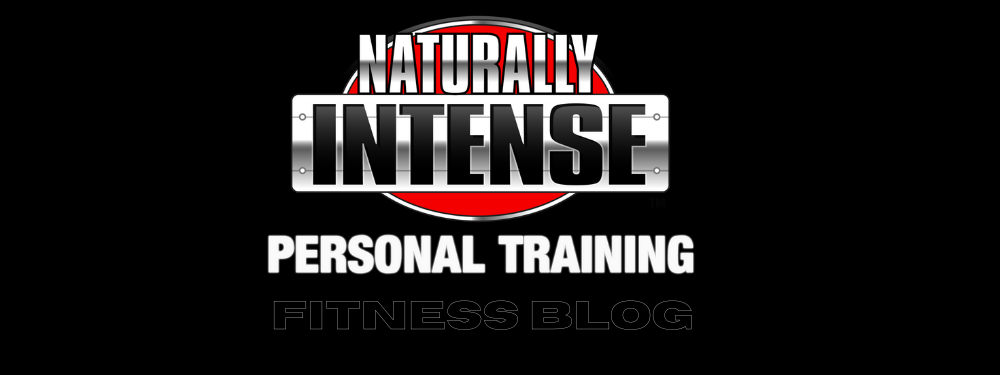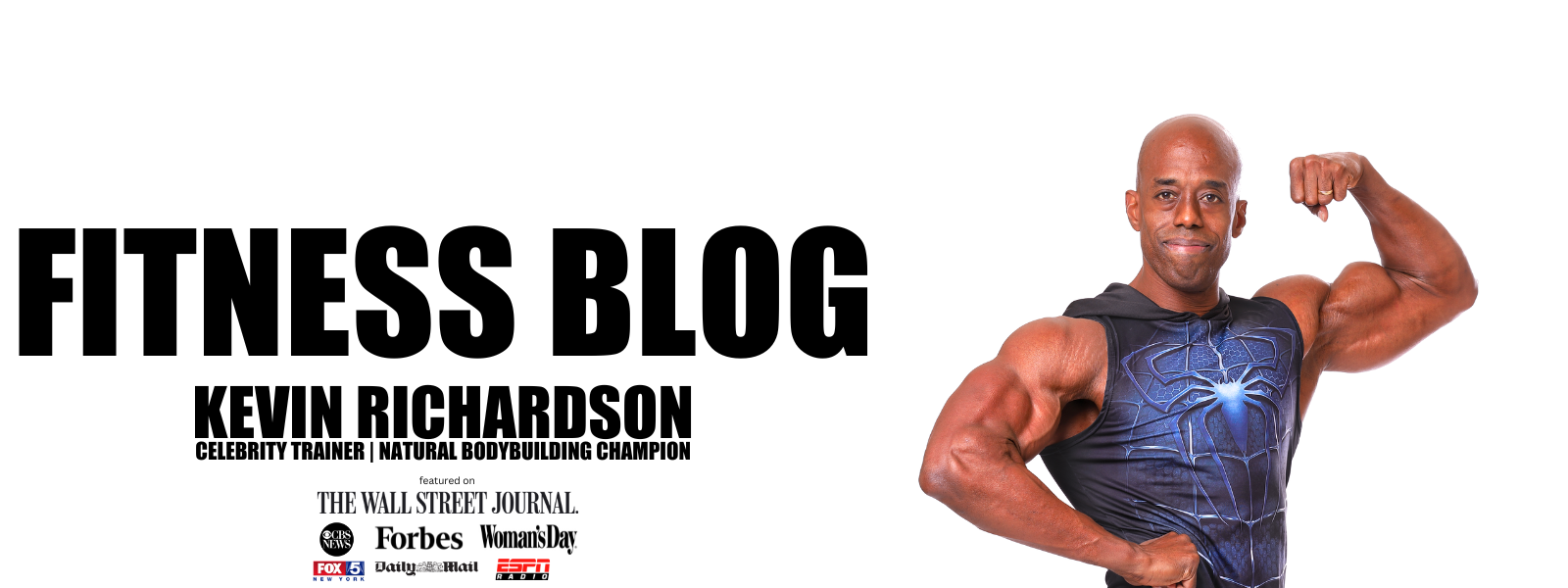High Intensity Training As An Alternative Treatment for Depression
Clinical depression is unfortunately a common occurrence in the United States. According to statistics from the U.S. National Comorbidity Survey, 16% of Americans will suffer from a clinically defined depressive disorder during the course of their lifetime and conventional treatments can be often difficult to administer. Among the cases looked at by the Comorbidity Survey only 22% received adequate treatment leaving the majority without proper treatment or diagnosis.(1) Further compounding the problem is the high rate of adverse effects that come from the use of antidepressants and the high dropout rates among users. This phenomena is particularly stronger among older adults who studies have shown to be less tolerant of antidepressants than their younger counterparts. Meta-analysis of antidepressant trials in older adults found that the dropout rate was 25% with 60% experiencing what were termed adverse effects during an average treatment period of only 5 weeks.(2) That being said the search for viable and nontoxic alternatives for the treatment of depression should be a key priority in mental health research, especially for the older members of our population. Exercise has thus far been positively viewed as a potential alternative treatment with most of the research focusing on the use of aerobic exercise. However randomized controlled trials have also identified significant improvements in clinically depressed older and younger adults, both male and female through the use of resistance training. (3-7)
Weight Lifting Found To Be As Effective As Aerobics In Relieving Depression
One study conducted at the University of Rochester and published in the Journal of Consulting and Clinical Psychology found that weight lifting was as effective as aerobic exercise in improving clinical depression.(6) The study involved 40 women, all clinically diagnosed with a depressive disorder who were randomly assigned to three groups for 8 weeks- one group with a exercise regimen involving running (aerobic exercise), the second group employing a weight lifting program while the final group remained on a waitlist as a control doing no extra activities during the two month period. Subjects were reassessed during the course of the study, after the study and then at 1, 7 and 12 month follow up intervals. The results were consistent across the board with both exercise regimes- running (aerobics) and weight lifting significantly reducing depression as compared to the control group even though no truly significant fitness changes were seen in either group. The study concluded that both forms of exercise were equally effective and that an aerobic effect was not responsible for improvements in depression among people who exercise.
Exercise Intensity Is Directly Related To Relief Of Depressive Symptoms
Another study published in the Journal of Gerontology sought to discover whether there was a relationship between the intensity of the exercise performed and the degree of reduction in depression among older adults. In this randomized control trial sixty older adults with diagnosed depressive disorders were assigned to three groups. Group one involved supervised progressive resistance high intensity training at a threshold of 80% of their maximum load for three days a week for eight-week period. Group two involved low intensity progressive resistance training at 20% of maximum load for the same length of time and group three received standard care from their GP with a mandate to not exercise for the duration of the trial. The study found an astounding 50% reduction in the Hamilton Rating Scale of Depression in 61% of the high intensity training group and that ‘strength gain was directly related to the reduction in depressive symptoms’. (8) Vitality quality of life scale improved more in the high intensity group than the others and while sleep quality was improved in all participants the greatest relative change took place in the high intensity training group.
With such impressive results there is a real need for much further research into whether this could be a clinically prescribed treatment for depression and possibly an alternative to the use of anti-depressant medication. One important factor that needs to be studied is the duration of exercise sessions required to affect a reduction in depressive symptoms as all the exercise protocols used in the trials lasted for the standard time of 60 minutes each. One of the biggest drawbacks to the use of exercise as a tool for people suffering from depression is the fact that the motivation required to train for an hour three times a week is hard to come by within the general population, much less an individual suffering from depressive disorders. However, with so much research showing that short high intensity sessions, lasting anywhere from 6 to 10 minutes can bring about increases in strength, muscle mass, endurance and coordination it might be a more viable alternative for individuals who would find it difficult to stick to a longer regime.(9,10,11) In addition some data suggest that ‘a low-frequency, high intensity approach to training is associated with greater long-term adherence as compared with a high-frequency, low-intensity approach.'(12)
High Intensity Training Vs Antidepressant Treatments For Depression
A very large number of randomized trials have found that fifty percent of all patients treated with antidepressant medication will show some signs of improvement in their depressive symptoms regardless of the class of medication used and the other half will respond to a combination of antidepressants. [13,14,15,16] These randomized trials are conducted by the pharmaceutical companies and in the real world the efficacy is notably lower. Other studies show that without antidepressants approximately 20 to 40 out of 100 people who took a placebo noticed an improvement in their symptoms within six to eight weeks. With antidepressants, 40 to 60 out of 100 people who took an antidepressant noticed an improvement in their symptoms within six to eight weeks, in other words, antidepressants improved symptoms in about 20 more people out of 100. [20,21,22] Antidepressants work by blocking the reuptake of serotonin, noradrenaline or dopamine, however, as good as this might sound, the reality is that research has shown that antidepressants only temporarily suppress symptoms and do not cure depression. [17] That is, although antidepressants are effective in the treatment of acute depressive episodes and is preventive so long as its use is maintained, no published findings to date suggest that antidepressants reduce future risk of depressive episodes once you stop using them. [18] Moreover, the lack of evidence that antidepressant treatment reduces the risk of developing subsequent depressive episodes suggests that the changes in brain function and structure that are thought to result from antidepressant treatment do not confer protection against the return of symptoms once antidepressant drug therapy is discontinued. [13]
Like all medications, antidepressants can have side effects and over half of all people who use antidepressants report experiencing side effects. Some of these side effects are believed to be a direct consequence of the medication’s effect on the brain and are relatively similar among various drugs of the same group. Patients who are taking antidepressants sometimes have a dry mouth, headaches, feel faint, anxious, and have a decreased sex drive and during long term use, the most troubling adverse effects are sexual dysfunction, weight gain, and sleep disturbance.[23-38] Contrast this with high intensity training protocols which have been shown to increase positive affect and well-being, and to reduce state anxiety and distress in anywhere from 60% or more of those involved in studies. High intensity training protocols also have known side effects such as increases in VO2 peak endurance, strength increases, increased lean muscle mass and weight loss when diet is controlled.[39-52] The effect of high intensity training on depressive states is acute, but unlike the use of antidepressants, it is something that can be done indefinitely as there are no adverse side effects, whereas with antidepressants, individuals who are experiencing adverse reactions may be apt to discontinue their antidepressant prematurely, never achieving full remission and increasing their risk of relapse and or of discontinuation reactions.[53] None of which is an issue for high intensity training.
Almost three decades ago, I created a system of personal training called Naturally Intense High Intensity Training. A system of high intensity ten-minute workouts performed three times a week that have been effective in doing everything from helping clients lose 100 lbs or more to helping athletes increase endurance and sports performance and help men and women in average shape progress to the point of being able to successfully compete in bodybuilding and physique related contests. It has been exceptionally successful in terms of weight loss and body transformation, which was its initial purpose as is a way of training I developed for myself as a way to realize my dream of becoming a competitive bodybuilder without resorting to the use of performance enhancing drugs of any kind. What I was not expecting, was the feedback I received from clients over the years who were using antidepressants and were able to stop using them after this form of high intensity training became a regular part of their lives. As someone who worked for years in clinical mental health settings, I would never advocate that anyone abandon their medication and replace it with high intensity training. However, having trained hundreds of men and women over the past 27 years, the rate of success among those who were able to wean themselves off or significantly reduce the use of antidepressant medication under the supervision of their clinical health care providers has been high enough that it is hard for it to go unnoticed.
Why Is High Intensity Training Not Implemented Universally As A Treatment for Depression
In terms of research, much more is needed but it may strike you as puzzling that such a noninvasive and seemingly effective method of relieving depression would not be front and center in the toolset for those suffering from clinical depression. However, as in the case of the economics of obesity, there are enormous profits to be made from the use of pharmaceutical interventions. Global revenue for antidepressants is projected to grow to nearly $17 billion by 2020 even with the growing number of lower priced generic forms of antidepressants, and studies find that antidepressant use contributes significantly to the increase in spending while contributing little to traditional measures of quality relief of depressive symptoms.[13] Many argue that the lack of research and promotion on non-drug related studies on readily available modalities such as high intensity exercise, stems primarily from the enormous profit that depression provides to pharmaceutical companies. Companies with powerful governmental lobbies have considerable power over mental health policy and protocols and that there would be little to be gained if depression could be treated simply by having someone train hard three days a week. The other problem is study set up. It is very easy and costs little to study aerobic exercise protocols, as having a set number of people on a treadmill at a set intensity for a prolonged period is relatively easy to monitor. Factor in the costs of trainers for a large group of people who all have to train individually the same way over a prolonged period, and study complexity and costs go up tremendously, but if there was enough of an interest, it would indeed be done. Regardless of the reasons, high intensity training protocols are indeed a potentially invaluable tool that could in some way help millions suffering from depression.
High Intensity Bodyweight Training: Ballistic Pushups & Dips!
This was a tough one!
Starts out with ballistic push ups (like clap pushups but without the clap as my wrist is still not 100%) nonstop for 20 reps, then all out on dips for 10 reps.
To say it was painful would be an understatement, but you just have to push through and keep on going.
Still training, hope you are too and as always, Excelsior!!! #naturallyintense
#hometraining #homeworkout #homeworkout #highintensitytraining #naturalbodybuilder #naturalbodybuilding #fitover40 #naturalbodybuildingvideos #chestday #chesttraining #naturalbodybuildingtips #pushups #dips #bodyweighttraining #highintensitytrainingtips #drugfreebodybuilding #calesthenics
Kevin's Unconventional Biceps Training- 3-6 Minutes a Week!
In this video I go over my biceps training using the Naturally Intense High Intensity Training protocols that helped me go from having arms measuring 11.5 to 12 inches to 18 inches drug free!
It's an unconventional approach for certain, but it's one that's helped my arms grow and the hundreds of men and women I have trained over the past 30 plus years.
Now, my success isn't due to being genetically gifted, as it took me the better part of 11 years to get my arms up to those measurements.
Which is significant as it works and been been proven time and time again to work for the average man or woman trying to grow their arms without drugs.
It's my hope that these high intensity training protocols can help you as much as they helped me!
Click on my bio link to see the full video on my YouTube channel and thanks as always for taking the time to look at my work!!! Excelsior!!! #naturallyintense
#highintensitytraining #naturalbodybuilder #naturalbodybuilding #fitover40 #naturalbodybuildingvideos #armworkout #bicepsworkout #naturalbodybuildingtips #biceps #armtraining #highintensitytrainingtips #drugfreebodybuilding #barbellcurls
At the Lancaster Classic Day 2 Elimination Rounds Against European Champion, and World Record Holder Leo Pettersen @leo_barebow_archer
I don't talk much about it but I'm also a competitive barebow archer (surprise!) and last Saturday I had the honor of making it to Day 2 at the Lancaster Archery Classic in the Barebow Division, as I made the top 64 out of 267 competitors and had a chance to shoot with some of the greatest barebow shooters on the planet!
I didn't make it past Leo, but it was a real rush to be there and a huge thanks to my coach, Joe MyGlyn @prolinearchery for helping me get there.
Thanks as well to my good friend @sean_chan33 for all of his help from the very start, to my line buddy Aaron Shea for taking the shot and showing up to support!
My thanks as well to rob_kaufhold for putting on and promoting one of the best archery tournaments on earth!
Thanks also to to everyone who took the time to send a supporting word and I am looking forward to next year!!! #naturallyintense #barebow
#lancasterclassic #lancasterarcheryclassic2024 #lancasterarchery #archery #fitover40 #barebowrecurve #targetarchery
Dumbo, Brooklyn circa 2004
This shot was taken as part of the promotion for my Naturally Intense DVD and was about a year after my last bodybuilding competition.
It was a grueling photoshoot.
We started at about 10 am and finished around 4pm and I was completely spent, but the more we shot the sharper I looked, so we kept on going.
It's nice to look back from time to time and as tired as I was, we all had a blast!
My thanks to @stephanie_corne_artwork, @https://pulse.ly/itgnag2dec and @ftaz1 for taking the shots!!!
Thanks for watching and as always, Excelsior!!! #naturallyintense
#naturalbodybuilder #naturalbodybuilding #throwback #fifthavenuegym #5thavenuegym #drugfreebodybuilding #naturalbodybuildinglifestyle #gymlife #gymmotivation #naturalbodybuildingmotivation #bodybuilding #blackandwhite #instablackandwhite #bnw
Can You Build An Impressive Physique Training Only At Home?
Absolutely!
I stopped training in commercial gyms as of March 2020 and have been training at home ever since.
Initially I was admittedly worried that I might lose some of my gains or not make as much progress, but that certainly wasn't the case.
I've consistently continued to improve with my high intensity workouts and muscles have no idea where they are training.
As long as the criteria of adequate intensity and overload are met, there will be an adaptive response and your muscles will get bigger and stronger.
So don't worry at all about where you train, focus instead of what will be the best way for you to always be training!
Thanks for watching and as always, Excelsior!!! #naturallyintense
Kevin's Three Day Training Spilt!
For the past 33 years I have trained three times a week with Naturally Intense High Intensity Training workouts lasting 10, 15 to 20 minutes max.
It's a training split tried and testes not only in it's helping me realize my goal of becoming a successful natural bodybuilder, but it's also helped hundreds of men and women over the past three decades.
I have tested just about every possible training split imaginable and for this particular style of high intensity training, this particular grouping consistently yields fantastic results.
I hope it helps you as much as it's helped me over the years and thanks so much for taking the time to look at my work.
Keep training hard and Excelsior!!! #naturallyintense
Excelsior!!! #naturallyintense
#trainingsplit #3daytrainingsplit #threedaytrainingsplit #naturalbodybuilding #naturalbodybuilder #naturalbodybuildingvideo #naturalbodybuildingmotivation #naturalbodybuildingtips #drugfreebodybuilding #bodybuilding #highintensitytraining #highintensitytrainingtips
405 Stiff Leg Deadlift for 7 Reps! High Intensity Training.
First leg workout of the year and already pushing it!
I haven't done a stiff leg deadlift over 315lbs for about 3 years at this point, and I did my last set with 315lbs and comfortably got to 10 reps and decided I had far too much gas left in the tank and that I should go up in weight.
So I did.
I figured I might get a solid 6 reps in, but I made it to 7 and I think I could have gone on to get a full 10 reps BUT that's when good judgement prevailed.
As a bodybuilder having not trained this heavy for so many years, the shock of this much weight would be more than enough to stimulate muscle growth, and doing more reps wouldn't yield any greater returns, only increase the likelihood of injury.
It's not about the numbers, it's about training to a point where you achieve your goal, and it's important to have a goal in mind as a bodybuilder based on increasing muscle mass rather than hitting a particular number.
Besides, if in my 20's I never did more than 405lbs on a stiff leg deadlift, it doesn't make any sense going heavier than when I am almost 50!
Could I deadlift more at this point?
Absolutely but just because you can doesn't mean you should!
So keep those weights in a good working range, keep it safe and as always Excelsior!!! #naturallyintense
#hometraining #homeworkout #homeworkout #roguerack #highintensitytraining #naturalbodybuilder #naturalbodybuilding #fitover40 #naturalbodybuildingvideos #backworkout #naturalbodybuildingtips #backtraining #highintensitytrainingtips #drugfreebodybuilding #fitoverforty #deadlift
Turning 50 in a few months...
Not much of a big deal for me as I still feel pretty much the same but I hope that my example helps show what can be done with a lifetime commitment to eating well and training consistently!
Thanks for coming along on the journey and as always, Excelsior!!! #naturallyintense
#naturalbodybuilder #naturalbodybuilding #healthylifestyle #fitover40 #drugfreebodybuilding #naturalbodybuildingmotivation #natty #fitness
Please note that all material is copyrighted and DMCA Protected and can be reprinted only with the expressed authorization of the author.

Featured everywhere from the Wall Street Journal to network TV, Kevin Richardson is the international fitness consultant for UNICEF, natural bodybuilding champion, creator of Naturally Intense High Intensity Training and one of the top personal trainers in New York City.
Related Articles
Exercise- A Natural Treatment For Depression And Anxiety
References for High Intensity Training As An Alternative Treatment for Depression:
1. Hirschfield RA, Keller M, Panico S, et al. The national depressive and manic depression association consensus statement on the under treatment of depression. Journal of American Medicine
2.Mittman N, Hermann N, Einarson T, et al. The efficacy safety and tolerability of antidepressants in late life depression: a meta-analysis. Journal of Affective Disorders.
3. McNeil K, LeBlanc E, Joyce M. The effect of exercise on depressive symptoms in the moderately depressed elderly. Psychology of Aging
4.Blumenthal JA, Babyak MA, Moore KA, et al. Effects of exercise training on older patients with major depression. Archives of Internal Medicine
5. Singh NA, Clements KM, Fiatarone MA. A randomized controlled trial of progressive resistance training in depressed elders. Journal of Gerontology Medical Sciences
6.Doyne EJ, Ossip-Klein DJ, Bowman ED, Osborn KM, McDougall-Wilson IB, Neimeyer IB. Running Versus Weight Lifting in the Treatment of Depression. Journal of Consulting and Clinical Psychology.
7. Martinsen EW, Hoffart A, Solberg O. Comparing aerobic and non aerobic forms of exercise in the treatment of clinical depression: a randomized trial. Comprehensive Psychiatry
8. Singh NA, Stavrinos TM, Scarbeck Y, Galambos G, Liber C, Singh MA. A randomized controlled trial of high versus low intensity weight training versus general practitioner care for clinical depression in older adults. Journal of Gerontology: Medical Sciences
9.Burgomaster KA, Hughes SC, Heigenhauser GJF, Bradwell SN,Gibala MJ. Six sessions of sprint interval training increases muscle oxidative potential and cycle endurance capacity in humans. Journal of Applied Physiology
10. Coyle EF. Very intense exercise-training is extremely potent and time efficient: a reminder. Journal of Applied Physiology
11. Burgomaster KA, Howarth KR, Phillips S, Rakobowchuk M, MacDonald MJ, McGee SL, Gilba MJ.Similar metabolic adaptations during exercise after low volume sprint interval and traditional endurance training in humans.Journal of Applied Physiology
12. Gilba MJ. High-intensity Interval Training: A Time-efficient Strategy for Health Promotion. Canada Current Sports Medicine Reports.
13. Fullerton CA, Busch AB, Normand S-LT, McGuire TG, Epstein AM. Ten-year trends in quality and spending for depression: 1996-2005. Archives of general psychiatry. 2011
14. Depression Guideline Panel. Depression in Primary Care, Vol 2: Treatment of Major Depression (Clinical Practice Guideline No 5; AHCPR Publ No 93-0551) U.S. Department of Health and Human Services, Public Health Service, Agency for Health Care Policy and Research; Rockville, MD: 1993.
15. Agency for Health Care Policy and Research. Treatment of depression – newer pharmacotherapies: Summary, evidence report/technology assessment number 7. Rockville, MD: US Department of Health and Human Services; 1999.
16. Thase ME, Rush AJ. When at first you don’t succeed…sequential strategies for antidepressant nonresponders. J Clin Psychiatry. 1997
18. Hollon SD, Thase ME, Markowitz JC. Treatment and prevention of depression. Psychol Sci Public Interest. 2002
19. American Psychiatric Association. Practice guideline for the treatment of patients with major depressive disorder (revision) Am J Psychiatry. 2000
20. Arroll B, Elley CR, Fishman T, Goodyear-Smith FA, Kenealy T, Blashki G et al. Antidepressants versus placebo for depression in primary care. Cochrane Database Syst Rev 2009;
21. Barbui C, Cipriani A, Patel V, Ayuso-Mateos JL, van Ommeren M. Efficacy of antidepressants and benzodiazepines in minor depression: systematic review and meta-analysis. Br J Psychiatry 2011
22. Depression: How effective are antidepressants? Informed Health Online 2017
23. Rosen RC, Lane RG, Menza M. Effects of SSRIs on sexual function: a critical review. J Clin Psychopharmacol. 1999
24. Skerritt U, Evans R, Montgomery SA. Selective serotonin reuptake inhibitors in older patients: a tolerability perspective. Drugs Aging. 1997
25. Spigset O. Adverse reactions of selective serotonin reuptake inhibitors: reports from a spontaneous reporting system. Drug Saf. 1999;20:277–287. [PubMed]
26. Dewan MJ, Anand VS. Evaluating the tolerability of the newer antidepressants. J Nerv Ment Dis. 1999;187:96–101. [PubMed]
27. Montejo AL, Llorca G, and Izquierdo JA. Sexual dysfunction with SSRIs: a comparative analysis. In: New Research Program and Abstracts of the 149th Annual Meeting of the American Psychiatric Association; May 9, 1996; New York, NY. Abstract. NR717. 266.
28. Monteiro WO, Noshirvani HF, Marks IM, et al. Anorgasmia from clomipramine in obsessive-compulsive disorder: a controlled trial. Br J Psychiatry. 1987;151:107–112. [PubMed]
29. McGahuey CA, Gelenberg AJ, Laukes CA, and et al. The Arizona Sexual Experience Scale: validity and reliability. In: New Research Program and Abstracts of the 150th Annual Meeting of the American Psychiatric Association; May 19, 1997
30. Pallanti S, Koran LM. Citalopram and sexual side effects of selective serotonin reuptake inhibitors [letter] Am J Psychiatry. 1999;156:796. [PubMed]
31. Noble S, Benfield P. Citalopram: a review of its pharmacology, clinical efficacy and tolerability in the treatment of depression. CNS Drugs. 1997;8:410–431.
32. Ferguson JM, Feighner JP. Fluoxetine-induced weight loss in overweight non-depressed humans. Int J Obes. 1987;11(suppl 3):163–170. [PubMed]
33. Sussman N, Ginsberg D. Rethinking side effects of the selective serotonin reuptake inhibitors: sexual dysfunction and weight gain. Psychiatr Ann. 1998;28:89–97.
34. De Wilde J, Spiers R, Mertens C, et al. A double-blind, comparative, multicentre study comparing paroxetine with fluoxetine in depressed patients. Acta Psychiatr Scand. 1993;87:141–145. [PubMed]
35. Mackle M, Kocsis J. Effects on body weight of the SSRI citalopram. Presented at the 37th annual meeting of the American College of Neuropsychopharmacology; Dec 14–18, 1998; Las Croabas, Puerto Rico.
36. Bouwer CD, Harvey BH. Phasic craving for carbohydrate observed with citalopram. Int Clin Psychopharmacol. 1996;11:273–278. [PubMed]
37. Winokur A, Lexon N, Allen K, and et al. Sertraline administered for 8 weeks to depressed patients did not alter sleep architecture: a preliminary report. In: New Research Program and Abstracts of the 147th Annual Meeting of the American Psychiatric Association; May 24, 1994; Philadelphia, Pa. Abstract. NR212. 110.
38. Haddad P. The SSRI discontinuation syndrome. J Psychopharmacol. 1998
39. Tremblay, A. et al. Impact of exercise intensity on body fatness and skeletal muscle metabolism. Canada Metabolism. 1994
40. Burgomaster KA, Krista R. Howarth KR, Phillips SM, Rakobowchuk M, MacDonald MJ, McGee SL, Gibala MJ Similar metabolic adaptations during exercise after low volume sprint interval and traditional endurance training in humans. – J Physiol 2008
41. Hawley JA Specificity of training adaptation: time for a rethink? J. Physiol. 2008
42. Tabata I, Nishimura K, Kouzaki M, Hirai Y, Ogita F, Miyachi M, Yamamoto K. Effects of moderate-intensity endurance and high-intensity intermittent training on anaerobic capacity and VO2max.-Med Sci Sports Exerc. 1996
43. Bahr R “Excess postexercise oxygen consumption–magnitude, mechanisms and practical implications”. Acta Physiologica Scandinavica. Supplementum 1998
44. Bahr R, Høstmark AT, Newsholme EA, Grønnerød O, Sejersted OM . “Effect of exercise on recovery changes in plasma levels of FFA, glycerol, glucose and catecholamines”. Acta Physiologica Scandinavica (September 1991)
45. Bielinski R, Schutz Y, Jéquier E . “Energy metabolism during the postexercise recovery in man”. The American Journal of Clinical Nutrition 1985
46. K. A. Stokes, M. E. Nevill, G. M. Hall, and H. K. A. Lakomy. Growth hormone responses to repeated maximal cycle ergometer exercise at different pedaling rates. Journal of Applied Physiology 2002
47. Powers M (2005). “Performance-Enhancing Drugs”. in Deidre LeaverDunn; Joel Houglum; Harrelson, Gary L.. Principles of Pharmacology for Athletic Trainers. Slack Incorporated. 48. Layman DK, Boileau RA, Erickson DJ, et al. A reduced ratio of dietary carbohydrate to protein improves body composition and blood lipid profiles during weight loss in adult women. J Nutr 2003
49. Melanson, EL, Sharp, T.A., Seagle, H.M, Horton, T.J. Donahoo, W.T. , Grunwald, G.K., et al. Effect of exercise intensity on 24-h energy expenditure and nutrient oxidation. J. Appl. Physiol. 2002.
50. Kuo CH, Harris MB. Abdominal fat reducing outcome of exercise training: fat burning or hydrocarbon source redistribution? Can J Physiol Pharmacol. 2016
51. Coppack, S.W., Fisher, R.M., Gibbons, G.F., Humphreys, S.M., McDonough, M.J., Potts, J.L., and Frayn, K.N. Postprandial substrate deposition in human forearm and adipose tissues in vivo. Clin. Sci. 1990






